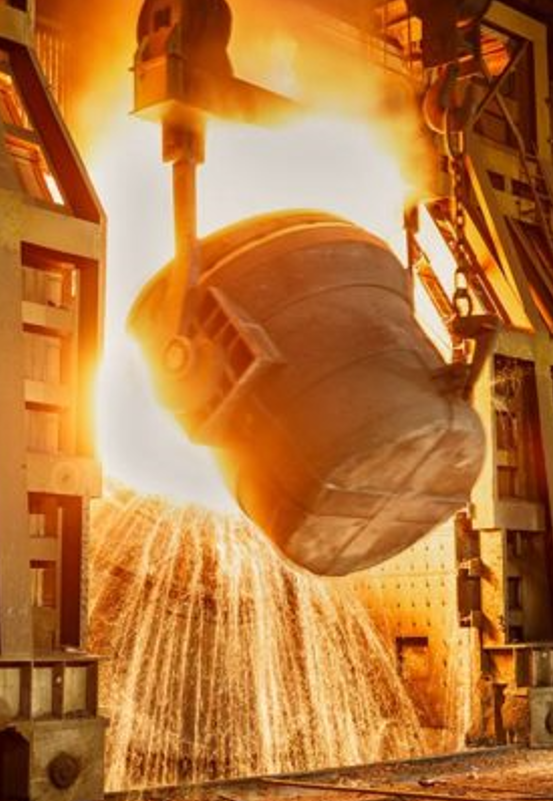Indian Steel Sector
The Indian Steel Sector has had a bullish growth for some time now. India is the second largest steel producer globally. We produced a total of 99.6 Million Tons of Crude Steel in 2020.
However, there is still a need for introduction of latest manufacturing technologies and automation to the existing and upcoming Steel Plants. These modifications will not only boost the existing capacity and reduce operating costs but also enable Indian Steel Manufacturers to achieve the manufacturing quality required for the International market.

Steel Process Plants
Steel is refined from Iron Ore and undergoes multiple transformations before it reaches the end consumer.
We have outlined the important process plants here.
Breslau Infratech has been involved in the design & consultancy of all the process plants outlined here.
You can visit the links to read more about these plants and details of Breslau Projects.
Crude Steel
Iron Ore is processed in this circuit where it is crushed to the required size of 3mm. Additionally, the grade of Iron Ore can also be improved by magnetic separation and other processes in the Beneficiation Circuit.
Sinter plants agglomerate iron ore fines (dust) with other fine materials at high temperature, to create a product that can be used in a blast furnace. The final product, a sinter, is a small, irregular nodule of iron mixed with small amounts of other minerals. The process, called sintering, causes the constituent materials to fuse to make a single porous mass with little change in the chemical properties of the ingredients.
Iron ore is crushed and mixed with flux to create hardened Pellets which can be handled and transported with ease. This is a crucial process for handling and transportation of Pellets to other Steel Process Plants from the Iron Ore Mines.
Direct Reduced Iron (DRI) also called Sponge Iron is produced by direct reduction of Iron ore. This reduction is carried out in a rotating kiln by passing a reducing gas or carbon over the Ferrous Oxide and removing the Oxygen therein. DRI is fed either I/O Pellet or I/O Lumps.
This is the final step in the production of Crude Steel. Sponge Iron or Scrap Steel is melted in furnaces. Manganese, Silicon and Carbon are added as per the required Grade.
There are three main types of furnaces – Induction Furnace, Arc Furnace & Blast Furnace. The temperature in a typical furnace reaches 1700ºC.

Finished Steel
Steel Billets are heated to a suitable temperature and then passed through multiple rolls. The cross sectional area of the member reduces with every successive roll as it is shaped into the desired shape.
Products – TMT Bars, Square Bar, Round Bar, Angle, Channel, I-Section
Similar to a Rolling Mill but setup at a fraction of the cost, Light Section Mill or LSM is capable of producing a wide range of products.
Products – Flat, Square Bar, Round Bar, Angle (upto 65mm), Channel (upto 65mm)
Hot-rolled wire having a round section with a diameter between 5 and 10 mm. Wire rod is produced on special wire-rod mills or combination wire-rod-section mills and wound into coils by coiling machines.
Products – Wire Rod is an intermediate product that is used to produce a wide range of products such as Nails, Cold Drawn Wire (Upto 0.01mm), Weldmesh, etc.
Hot Strip Mills offer a wide size range of the hot rolled strip thicknesses from 1.5 mm to 20 mm, width from 750 mm to 2200 mm. These Coils are an important intermediate product.
Finished Products made with Strip – Hollow Structural Sections, Flexible Tubing, Heat Exchangers, etc.
